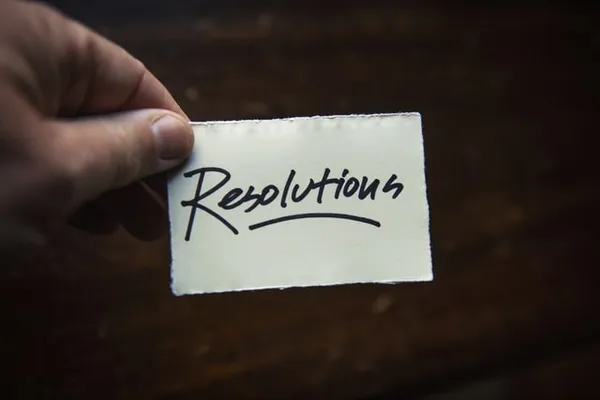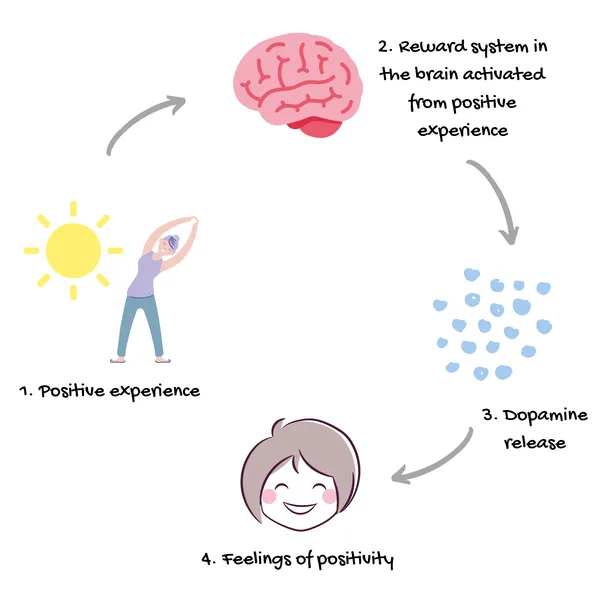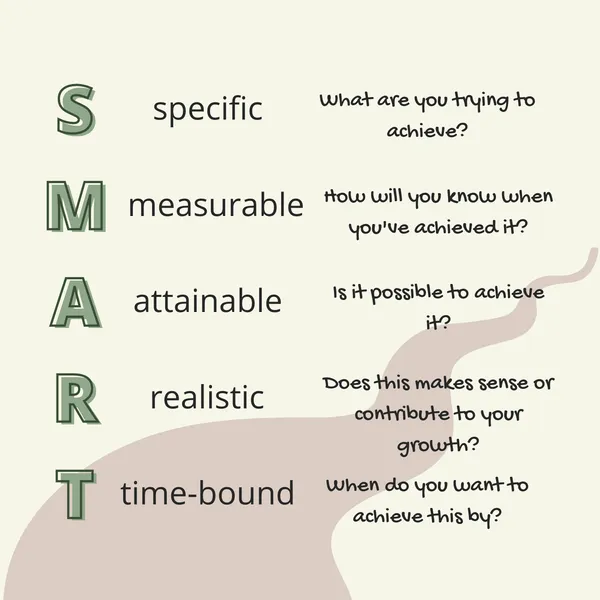Shifting Resolutions to Intentions
This blog post is associated with episode one of the podcast on Shifting Resolutions to Intentions.
New Year’s Resolutions. These three words are often used to define how we want our entire year to look. They seem motivating, empowering, and exciting when we think about the prospect of resetting and having a fresh start. How many times have you said to yourself, “This is the year, I’m going to set some resolutions and it’s going to be great!”? I’m certainly a victim of this and I have experienced pangs of anxiety and feeling like a failure because I either gave up on them or things changed and I didn’t follow through. Huge emphasis on the latter - things change throughout the year and that’s perfectly normal. While there are a number of factors that are in our control that affect our circumstances, there are also many that are out of our control. There are moments we can anticipate and then there are times when the rug gets pulled from beneath our feet and we topple over.
Resolutions, which is defined as “a firm decision to do or not to do something,” is a clear example of black-or-white thinking. From a psychoeducational perspective, this can be a form of all-or-nothing thinking because we frame them as something that is a pass or fail. Psychologist Cliff Arnall called every third Monday of January “Blue Monday” because people tend to drop off their resolutions by this time. Peter Herman, a psychology professor, and his colleagues identified the “false hope syndrome,” which refers to resolutions typically being unrealistic and not aligned with internal views individuals have of themselves. Either you put all of your time and effort into it and get it done or if you’ve missed a few days (or weeks), then you might as well quit.

Resolutions are often associated with self-worth. They are vague and heavily influenced by what people expect of us. They are likely habits that we are trying to change, which are challenging to break and adjust because our bodies and mind are conditioned to think, feel, and act a certain way. The way we handle habits is quite similar to addictive behaviour because the reward system in our brain is being told that what we’re doing makes us feel good and triggers a dopamine release. Dopamine, which is a neurotransmitter or chemical messenger, is in charge of the reward sensation that we feel. It leads us to crave the things that make us feel good, and over time, it becomes a habit. If you’d like to learn more about dopamine release and the reward system, Dr. Jud released a helpful video with beautiful illustrations to highlight this topic. When we try to change these habits and behaviours that we are comfortable with, it’s not easy to break them, which is often the case with resolutions. Shifting from resolutions to intentions is one way to be more mindful of your current circumstances are to draw a path to get to where you want to be.

An intention, which is defined as “an aim or plan,” focuses on the present and encourages you to think about what you would like to do instead of what you must do. Setting intentions prompts you to cultivate your ideas and plan for how they will grow. They are a guiding principle for how you want to be, how you want to live and to prioritize the things that matter to you the most. They encourage you to align what you’re thinking with what you’re feeling. For example, you might be feeling drained from a long day at work because you had to deal with a difficult client or you had a tough conversation with your boss, but your mind is saying that you have to exercise because today is Wednesday, which is your planned workout day. Sometimes, it’s okay to adjust those plans and if the intention is to be active, perhaps you can go for a more relaxing walk instead of a tiring HIIT class.
Colleen McCulla, an artist and performer, spoke about the power of intention in her TEDTalk and how it helped her with weight loss of over 175lbs. Instead of thinking “I will lose weight this year,” Colleen spoke about how she set an intention every day to work towards a healthier life. Whether it was reading a page of a self-help book, documenting her progress, or walking to the end of her block, she listened to her body and mind to guide her through the day. Colleen also emphasized that change didn’t happen overnight, and while some days didn’t pan out the way she intended, she listened to what her body and mind needed and what she was able to do that day.
Let’s take a moment to imagine mental health as a muscle. The more you exercise it and work on it, the stronger it gets. There are days you might feel sore and tired or even moments where you don’t want to work on it anymore or you’ve hurt yourself. Just like going to the gym and having a personal trainer guide you, the same can be done with mental health and strengthening those muscles. This could be seeing a therapist, talking to a friend, practicing self-reflection, or setting an intention for the day. I encourage you to pause and practise setting an intention. Maybe it’s cleaning your space by putting away the dishes or incorporating activity by doing ten push-ups.
Incorporating rest and recovery days are integral to both your physical and mental health. There are different options available to guide you towards the path you have drawn for yourself and prioritizing your mental health will influence your day-to-day interactions with yourself, your work, and those around you.

Between resolutions and intentions, there are three major differences:
Intentions focus on being mindful and present and do not require a start date. Instead of saying, “I’ll start next week,” intentions provide the opportunity to do something today to start making your change. It could be organizing your day by writing a to-do list or doing a 5-minute stretch to feel more relaxed.
Intentions remove the expectation of success and allow for “off days.” You focus on the positives and highlight what you have. This might sound like, “I’ve been walking every other day, I would like to keep this up for the next week.”
Intentions are flexible and allow for change depending on what your body and mind need today. This could be telling yourself, “Work was really tiring today and I don’t want to run, but I’ll go on a walk and give my friend a call to catch up.”
Now that we’ve touched on resolutions and intentions, how do goals fit into all of this? Goals are defined as “the objective of a person’s ambition or effort; an aim or desired result.” Goals can be considered a milestone or the end of a pathway that we have laid out. Much like intentions, goals focus on an aim and provide direction towards the desired outcome. Together, they provide an effective way to guide us in our journey to change. There will be bumps and hills and sometimes you might even have to take detours. Some of these challenges might be external but a lot of them will be internal and are likely to be influenced by your mental health or how you’re feeling on a particular day. Similar to the way mental health is like a muscle, working through those bumps and climbing those hills will help you get stronger. Depending on what your goal is, the path could be long or short, and on that path, setting intentions guide you towards that goal.
To make our goals more effective and impactful, a helpful practice is to set S.M.A.R.T. goals. This refers to specific, measurable, attainable, realistic, and time-bound. Oftentimes, we think about the goals that we have but it’s rare that we sit down with a pen and paper and write them down. A Harvard Business Study noted that the 3% of MBA graduates who wrote their goals down earned ten times as much as the other 97% of graduates put together ten years after graduation. Although this study was dated back a few decades ago, there is no doubt that writing them down and sharing about them will help you stay accountable and more likely to achieve them. If you would like some additional resources, Khan Academy illustrates how to write a S.M.A.R.T. goal in a three-minute video. Pick Up Limes also created a printable exercise with guided questions to help you build good habits effectively.

You help you get started, below are two common resolutions that I have shifted into S.M.A.R.T. goals and intentions.
Resolution: I want to lose 10lbs
S.M.A.R.T. Goal: I will walk between 30-50 minutes at least 4 days a week. I will track my progress with my watch or smartphone and write it down in my journal after each walk. Increasing my activity levels may help me towards my weight loss and improve my overall health. I will re-evaluate my progress after one month and increase my walking time or make adjustments like adding exercises to incorporate more physical movement.
Intention: I would like to call a friend while I go on my walk today.
Resolution: I want to get a new job
S.M.A.R.T. Goal: I will identify five different positions and companies that I want to apply for between March 1-7. From March 8-14, I will edit my resume and write the cover letters for the jobs and send in my applications. From March 15-21, I will follow-up with the companies I have applied for through an email. If I do not hear back by March 31, I will look for five new positions and apply to them. I will also identify and call one friend to get feedback on my resume and cover letter.
Intention: I would like to spend 15 minutes researching a job today.
We do our best to plan ahead and organize our lives but there are curveballs and moments that we can’t predict. During these instances, they are opportunities for us to exercise our mental health muscles. I encourage you to try some of the strategies below:
You can start with intentions at any moment of any day. They belong to you, they are yours to define and adjust as needed, and they are a reminder that you’ve got this.